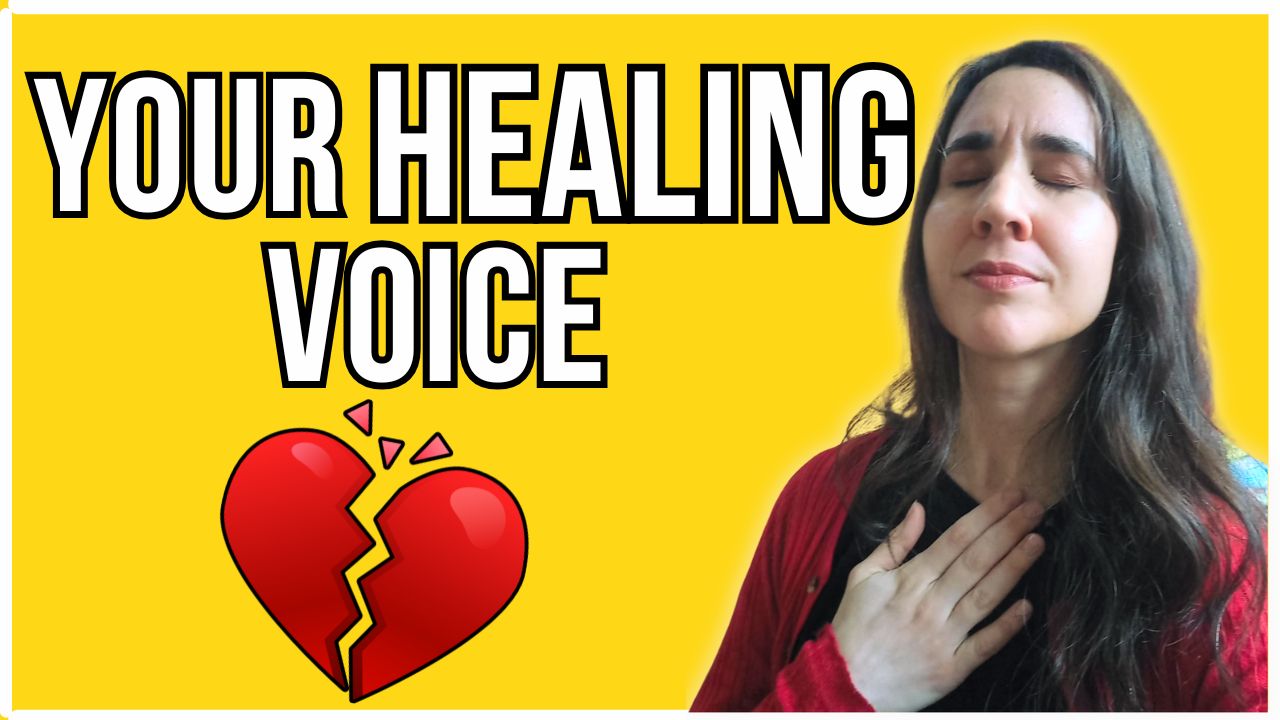
How to Sing Through a Heartbreak — And Even Transform Your Voice in the Process
How to Sing Through a Heartbreak — And Even Transform Your Voice in the Process
Have you ever gone through a heartbreak only to discover that singing suddenly feels impossible?
Maybe you open your mouth to sing and tears come up…
Your voice breaks…
Or those high notes that once felt easy are nowhere to be found because you just don’t have the energy.
I get it.
Heartbreaks are brutal. I’ve lived through several myself — and through those painful moments, I ended up discovering something surprising:
There is a way to sing through a heartbreak, and even upgrade your voice because of it.
In this article, we’ll explore:
What happens to your voice during a heartbreak
What to do to recover your voice and your emotional balance
How this process can genuinely transform your singing
Let’s begin.
1. What Happens to Your Voice During a Heartbreak
When your heart breaks, your entire system goes into what I call turbo-alarm mode.
Your survival brain interprets rejection as danger.
To the primitive part of your mind, losing someone you bonded with feels like a threat to your safety — even if logically it isn’t that dramatic.
Of course, in reality:
A relationship ended.
It didn’t work out.
And eventually, a better one will come.
But your nervous system doesn’t understand that. It reacts as if you’re under threat.
This emotional crash deeply affects your voice.
Your Body Tension Drops — And That Makes Singing Hard
When you’re sad, your body tone (or “body TOS”) drops.
Low body tone makes singing dramatically harder — your support collapses and your sound becomes unstable.
Your Throat Tightens When You Suppress Emotions
Most people don’t allow themselves to fully feel emotions.
We either:
react to them,
avoid them, or
suppress them.
When that happens, you’ll often notice:
throat tightness,
tension around the sternum and belly,
over-engagement of the rectus abdominis.
All of these directly interfere with healthy vocal production.
Your Vocal Folds Go Into Protection Mode
When the nervous system feels unsafe, the vocal folds instinctively close to protect the lungs.
That protective closure makes singing:
tight
breathy
strained
or simply impossible
This is why singing during acute heartbreak often feels like fighting your own body.
And here’s the important part:
In this state, you should not force yourself to sing.
You’re sending your brain conflicting messages:
“Hide, retreat, protect!”
and simultaneously “Express, open, project!”
Your system can’t do both.
So what’s the solution?
Let’s move into the healing part.
2. What to Do to Recover Your Voice (and Yourself)
The first step in getting your voice back during heartbreak is not vocal.
It’s emotional.
Your voice needs you to feel safe, and that requires processing what’s happening in your body.
Step 1: Allow Yourself to Feel
This is where most people struggle.
An emotion is simply a vibration in the body — energy meant to move.
But when we resist it, we get stuck in it.
And when we get stuck, our voice suffers.
So here’s what to do:
Go somewhere private and safe
Sit comfortably
Breathe in and out without holding
Let the air move gently
Observe the sensations without judgment
Do this for 5 minutes.
You may:
cry
shake
feel heaviness in your chest
feel tightness in your throat
That’s okay.
That means the emotion is moving.
Step 2: Vocalize the Emotion Gently
If you feel sadness in your chest or throat, inhale and allow a raw vocal release:
For sadness:
“Ahhh…”
For anger:
“Haaa…”
Not pretty.
Not controlled.
Just honest.
Let the sound out without thinking about singing technique.
Give yourself 3–5 minutes of this.
You’ll feel lighter.
Step 3: Use the Heart-Center Movement Exercise
Here’s a physical exercise to help move emotional energy through the chest:
Inhale while drawing your elbows back
Exhale on an “Ah” as the elbows move forward, rounding the spine and extending your pinkies forward
It looks simple, but it’s powerful.
This motion:
opens the heart space
loosens chest tension
restores emotional flow
signals safety to your nervous system
Step 4: Build Safety Before You Sing
You cannot sing well while your nervous system is in danger mode.
So your next job is to signal safety to your brain.
Here are accessible ways to do that:
Slow breathing
Inhale 3 seconds
Exhale 3 seconds
Repeat several times
Open, spacious arm movements
These expand the chest and tell the brain:
“We are safe. We are open.”
Joyful movement
Dance, sway, shake your body.
Avoid looping sad songs.
Play something uplifting.
Movement = safety.
Practice presence
Heartbreak makes us live in the past, reliving pain over and over.
Learning to return to the present is a life-changing skill — and there are great tools for it like meditation or The Power of Now.
When your thoughts change, your body tone changes, and your voice responds instantly.
3. How This Process Will Transform Your Voice
This is the part nobody talks about.
Heartbreak, when processed in a healthy way, doesn’t just make you stronger as a person — it elevates your voice.
Here’s how:
You gain emotional depth
Once you learn to feel instead of suppressing, your voice gains colors, shadows, richness.
You develop a stronger vocal identity
Every emotion you allow yourself to experience adds nuance to your tone.
You become more expressive
Expression is technique.
Technique is expression.
They feed each other.
You become more resilient
When you learn to bring your body into safety first, you eventually learn to sing even during challenging times — without harming your voice.
You gain emotional intelligence with your voice
Not reacting, but feeling and releasing.
Not collapsing, but staying grounded.
This is the foundation of expressive singing.
Heartbreak Can Be a Catalyst
If there’s one gift your heartbreak can leave you, it’s this:
Learning to feel.
Learning to be present.
Learning to sing from a place of safety.
This is how you alchemize pain into artistry.
If you want to go deeper, I invite you to book a call with me.
My 10-week one-on-one coaching program guides you through the foundations of truly healthy, functional, expressive singing.
